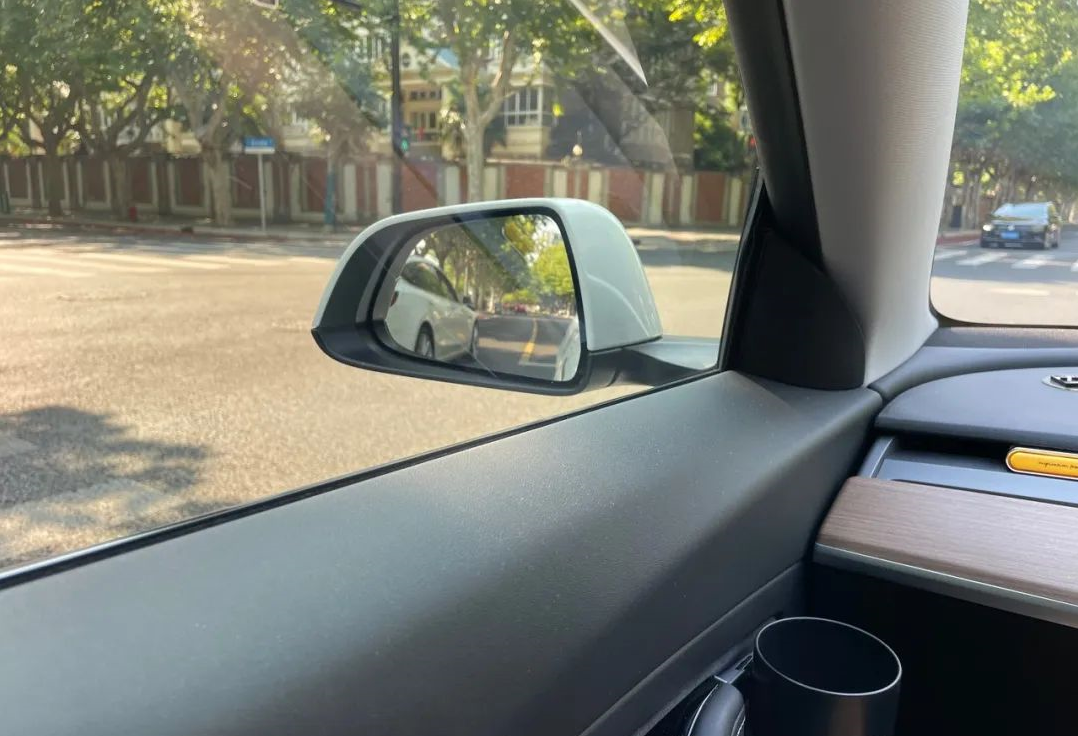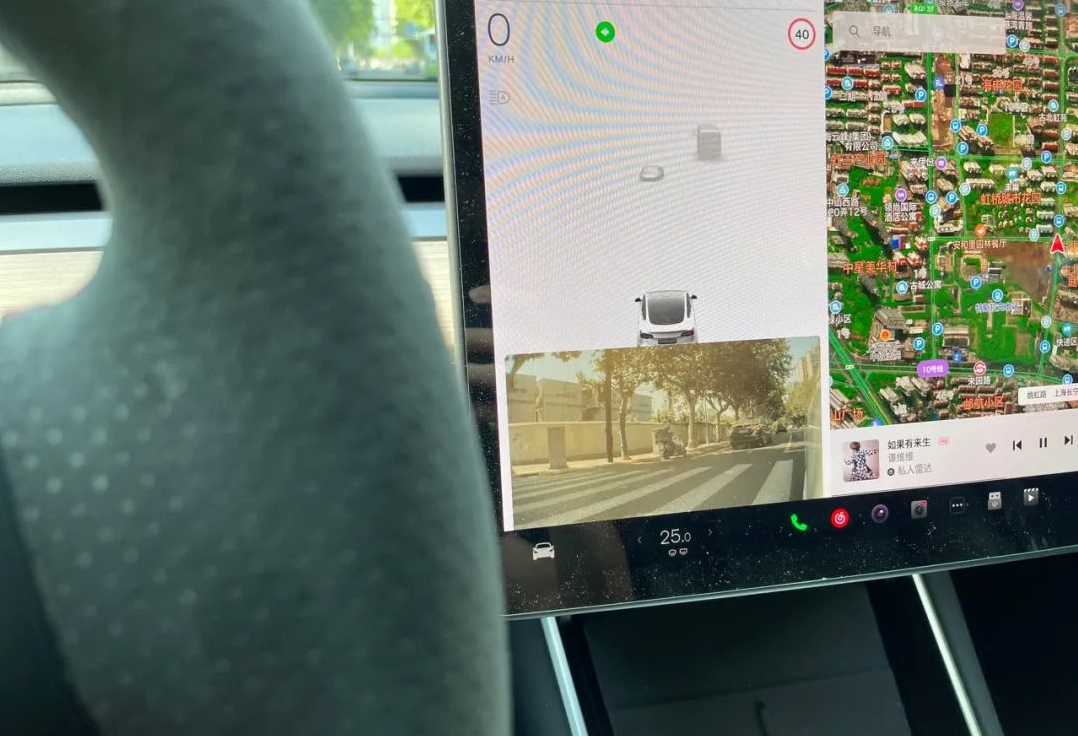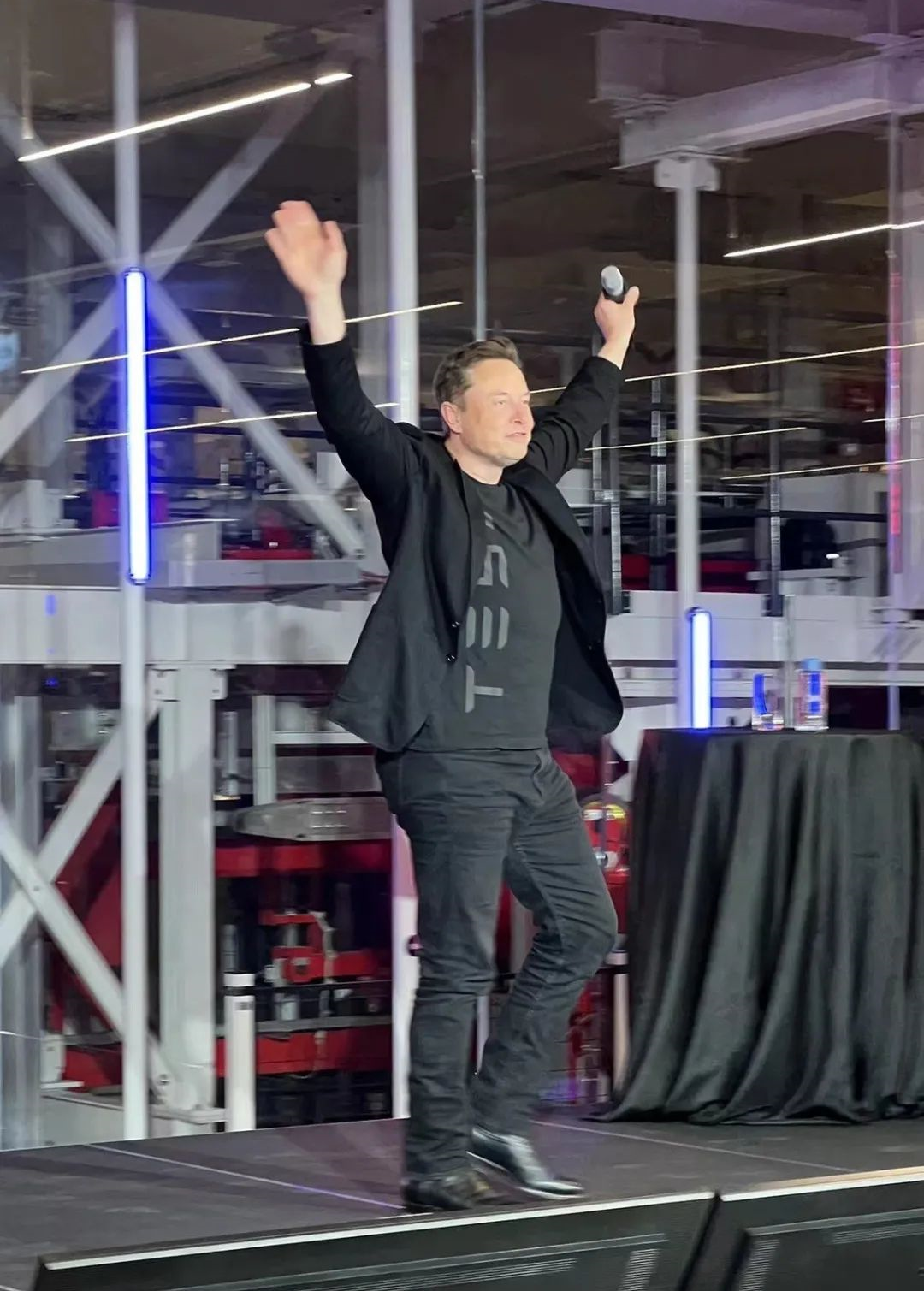Text:
Total words: 961
Estimated reading time: 4 minutes
An excellent technical solution should not only elegantly solve existing problems but also expand the boundaries of problems that can be solved. In other words, good technology should substantially raise the upper limit of problem-solving capacity.
I drive a long-range Model 3, and many features were updated via OTA after the delivery. Most updates improved user experience, while some updates made little difference, except for one interesting software update: electronic rearview mirror.
As a user, let me describe my experience with this feature.
For over a year, I had a regular rearview mirror without an electronic function. However, after the update, the screen displayed an electronic rearview mirror when I turned on the turn signal. From being unfamiliar, I now check the electronic rearview mirror every time I turn.
This is because an electronic rearview mirror covers a much broader angle than a regular one. Take a look at the comparison between the first-person view from the same position in the images below.


In fact, many car companies have attempted to increase the viewing angle of regular rearview mirrors by using innovative, split optical lenses. In practice, such measures had limited success, as the increase in the angle was hindered by the size and shape of the lenses. If we hypothetically assume that innovative optical lenses increased the viewing angle by 30%, electronic rearview mirrors could increase the viewing angle by as much as 100% (as seen from the viewing angle).
However, an excellent technical solution should not be limited to elegantly solving existing problems. It should also expand the boundaries of problems that can be solved. Apart from increasing the viewing angle, electronic rearview mirrors can do things that regular rearview mirrors cannot. This is what truly expands the boundaries of problem-solving and makes a solution excellent.
For example:
It can realize “lateral collision warning and intervention when changing lanes.” Twice, I was changing lanes with the turn signal on, but the car automatically corrected its direction due to the approaching vehicle from behind. This feature may have been achieved by combining lateral cameras (same as those for electronic rearview mirrors) and ultrasonic sensors.
It can also (in the future) identify and warn against sudden opening of doors when parking by detecting approaching cyclists or e-bike riders behind the car. Such capabilities are beyond the reach of regular rearview mirrors.Although there are many advantages and innovations, this so-called electronic rearview mirror was not developed to replace ordinary rearview mirrors. Attribution error is one of the most common errors when studying things.
This electronic rearview mirror is actually a technical branch of Tesla’s Full Self-Driving/Autopilot (FSD/AP) technology. Tesla has designed a set of sensor layouts and software systems according to the concept of fully automatic driving, then taken two of the sensors and packaged them into a function as an electronic rearview mirror.
Therefore, these two sensors were originally part of a more powerful and higher-dimensional system. It is difficult to make breakthroughs with forward thinking, but it is easy to innovate by reducing the dimension from a more powerful technological system.
Perhaps this is the dimension of technology.
This article is a translation by ChatGPT of a Chinese report from 42HOW. If you have any questions about it, please email bd@42how.com.
